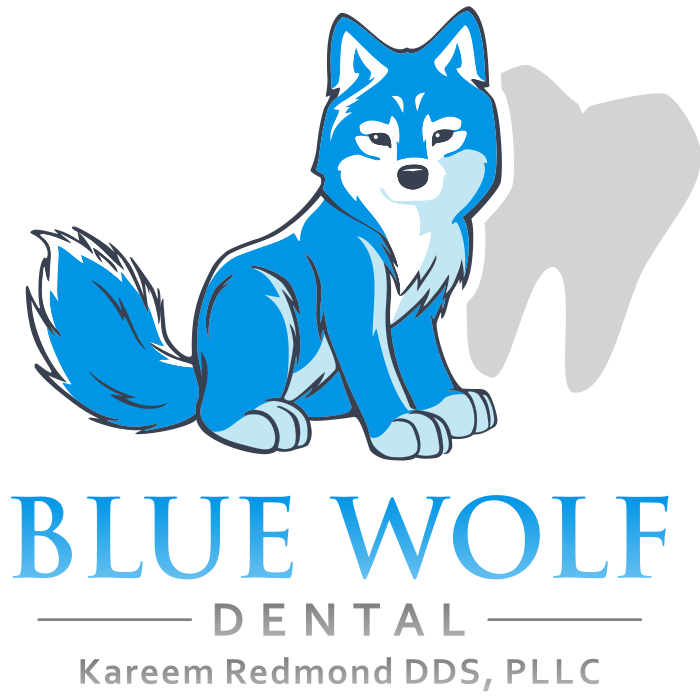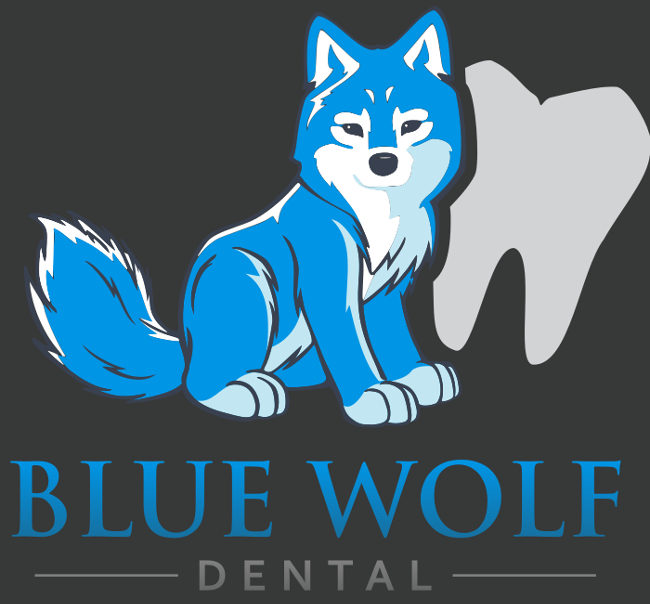General and Preventative Care
The modern pace of our urban life hits hard on our schedule. So it may easily bring undesirable consequences to the overall state of your oral health.

Fluoride Treatment
Fluoride is a naturally occurring mineral that is essential for proper tooth development and the prevention of tooth decay. Tooth decay is still a significant problem in many communities throughout the United States, but it is far less prevalent than it used to be as a result of fluoridation of public water supplies. This is why the major associations of pediatric dentists and dentists support water fluoridation to the current recommended levels of 0.70 parts per million (ppm). This is also why the federal Centers for Disease Control and Prevention (CDC) has called fluoridated water one of the most significant health achievements of the 20th century. Though, not everyone has access to fluoridated water. This is one reason why fluoride supplements are often recommended for children without access to fluoridated water. Since it is possible for children to get too much fluoride, it is best to seek professional advice on the use of any fluoride containing product.
How Fluoride Helps
The protective outer layer of teeth, called enamel, is often subject to attacks from acids. These can come directly from acidic foods and beverages, such as sodas and citrus fruits, or sometimes through the decay causing bacteria already in the mouth that create acid from sugar. These bacteria congregate in dental plaque on teeth and feed on sugar that is not cleansed from the mouth. As these bacteria metabolize (breaking down) sugar they produce acids that can eat through tooth enamel. This is how cavities are formed in teeth. When fluoride is present, it becomes part of the crystalline structure of tooth enamel. This hardens the tooth and makes it more resistant to acid attack. Fluoride can even help repair small cavities developing in the enamel.
Delivering Fluoride to Teeth
Fluoride ingested by children in drinking water or supplements can be taken up by their developing permanent teeth. Once a tooth has erupted, it can be strengthened by fluoride exposure to the enamel surface. Using a fluoride-containing toothpaste is one way to make sure your children’s teeth receive helpful fluoride exposure daily. We recommend using only a grain of rice sized amount for children ages 2-6 and just a tiny smear for kids under two. Fluoride should not be used on children younger than six months. A very beneficial way to deliver fluoride to the teeth is with topical fluoride applications painted right onto your child’s teeth and allowed to sit for a few minutes for maximum effectiveness.
How Much Is Too Much?
Teeth that are over-exposed to fluoride as they are forming beneath the gum line can develop a condition called enamel fluorosis. Enamel fluorosis is characterized by a streaked or mottled appearance of the tooth. Mild fluorosis takes the form of white spots that are hard to see. In more severe cases the discoloration can be darker, with a pitted texture. The condition is not harmful, but may eventually require cosmetic dental treatment. Tooth decay, on the other hand, is harmful to your child’s health and can also be quite painful in severe cases.
The risk for fluorosis ends by the time a child is about 9 years old and all the permanent teeth have fully formed. Since fluoride use is cumulative, all the sources your child comes in contact with, including powdered infant formula mixed with fluoridated tap water, need to be evaluated. While caution is advised, it would be a mistake to forgo the benefits that this important mineral can bring to your children’s teeth and overall health.
Dental Exams
Dental examinations play an important role in maintaining your oral health because they help identify potential problems before they develop into major issues. Identifying problems early allows the Blue Wolf Dental team to preserve more tooth structure, perform less invasive treatment, less costly procedures, and identify future complications. At Blue Wolf Dental, we believe in proactively addressing dental issues rather than waiting on dental pain to occur. By doing this, we are able to maintain more of the patient’s natural teeth and avoid more extensive dental work in the future.
Not only do dental examinations involve carefully inspecting the teeth, they also allow us to see any existing abnormalities in the head and neck region including the lips, tongue, throat and gums. These abnormalities could include identification of lesions, cysts, tumors, cancerous lesions, or pre-cancerous lesions. It is important to identify these lesions early in order to treat them least invasively and most effectively. Digital radiographs will often be taken the day of your appointment to aid in diagnosis of any potential dental problems.
Dental Cleanings
Dental cleanings are an important part of your dental health. The standard dental cleaning, also referred to as a “prophylaxis” or “prophy”,” removes plaque (soft, sticky, bacteria infested film) and tartar (calculus) deposits that have built up on the teeth over time. Calculus is so hard that patients are not able to remove it themselves at home and is one of the reasons regular dental cleanings are required. For patients that have significant bone loss and calculus built up on the root surface of the tooth, a more extensive treatment called scaling and root planning may be indicated. With scaling and root planning calculus is removed from the root surface of the tooth to prevent loss of the bone supporting the tooth, the gingiva around the tooth, and ultimately the tooth itself.
At Blue Wolf Dental, we believe in customized care for each patient. While many dentist offices recommend dental cleanings every six months, Dr. Redmond believes in treating each patient based on their individual needs. While some patients may need a cleaning every three or four months, others may only need one cleaning a year – we don’t base our care on what has been done traditionally or what your insurance company pays for, but rather on what is best for each one of our patients!
For patients that are anxious about having their teeth cleaned, talk to us about your options to reduce anxiety during your cleaning, including the use of nitrous oxide (laughing gas) to relieve your stress and have an enjoyable dental visit.
Digital Radiographs
It’s almost impossible to imagine the practice of dentistry without x-ray technology. Radiographs (x-ray pictures) allow dentists to diagnose and treat problems not yet visible to the naked eye, including early tooth decay, gum disease, abnormal growths, and dental abscesses. There is no question that since x-rays first became available a century ago, this diagnostic tool has prevented untold suffering and saved countless teeth. Now, state-of-the-art digital x-rays have made the technology even safer and more beneficial.
Digital radiographs use a small electronic sensor placed in the mouth to capture an image, which can be called up instantly on a computer screen. When digital x-rays first became available about 20 years ago, they immediately offered a host of advantages over traditional x-ray films, which require chemical processing. Most importantly, they cut the amount of radiation exposure to the dental patient by as much as 90%. While faster x-ray films have been developed over the years that require less exposure, making that difference less dramatic, a digital x-ray still offers the lowest radiation dose possible.
While digital technology has minimized the health risks of x-rays, it has not entirely eliminated it. X-rays are a type of radiation used to penetrate the tissues of the body to create an image. In doing so, there is always a slight possibility of causing changes at the cellular level that might lead to future disease. Of course, there are sources of radiation present in the daily environment, like the sun, for that can also cause disease. It’s important to note that the chance of this happening is thought to be cumulative and not based on a single exposure. Still, x-rays are not considered risk-free regardless of how technology reduces your exposure. That’s why dentists will only use them when the benefit of obtaining better diagnostic information outweighs the procedure’s small risk. This is particularly true of computed tomography or CT scans, which can raise the level of exposure, yet yield a tremendous amount of information per scan. No matter which technology is being used, each case is considered individually and your safety is always our top priority. If you have questions about why an x-ray is being recommended for you, please feel free to ask.
Oral Cancer Evaluations
The thought of you or your loved ones developing cancer can be scary. However, the more you know about cancer the better you will be able to protect yourself and the ones you love. Oral cancer is very treatable if caught early. Unfortunately, about two-thirds of oral cancers are not caught until the later stages. You may think that if you are a non-smoker, this topic is not of concern to you, but please think again.
While most oral cancer patients are smokers, the fastest-growing segment of newly diagnosed cases is young, non-smoking adults. The culprit is a particular strain of oral cancer is the Human Papilloma Virus (HPV). HPV is the most common sexually transmitted disease in the U.S. and affects about 20 million Americans. In fact, it is estimated that at least half of all sexually active people will contract HPV during their lifetime. Of the over 100 strains of HPV, most lead to symptoms no more serious than warts. In many cases a person’s immune system can rid the body of the disease within two years. The strain known as HPV16, unfortunately, is different. The HPV16 virus By inserts its own DNA into human cells causing a mutation that turns normal cells into malignant ones. You may already be aware that HPV16 has been linked to cervical cancer. We now know it is also responsible for many new cases of oral cancer.
Sealants
The most likely location for a cavity to develop in a child’s mouth is on the chewing surfaces of the back teeth. These surfaces are not as smooth as the other areas of your teeth are. Instead, they are filled with tiny grooves referred to as “pits and fissures,” which trap bacteria and food particles. The bristles on a toothbrush can’t always reach all the way into these little crevices. This creates the perfect conditions for tooth decay.
When a child’s permanent teeth first erupts, the teeth are not as resistant to decay as an adult’s teeth are. The hard enamel coating that protects the teeth changes as it ages to become stronger. The fluoride found in toothpaste, in some drinking water, and in treatments provided at the dental office can strengthen enamel on teeth. However, it is hard to get fluoride into those deep pits and fissures on a regular basis. Fortunately, there is a good solution to this problem: dental sealants.
Dental sealants are resin coatings that smooth out the chewing surfaces of the back teeth, making them resistant to decay. A sealed tooth is far less likely to develop a cavity, require more expensive dental treatment later on, or cause your child pain.
How Sealants Are Placed
You can think of a sealant as a mini plastic filling. Tooth enamel does not contain any nerves so placing a sealant is painless and does not routinely require numbing shots. First, the tooth or teeth to be sealed are examined so that if any decay is found it can be gently removed. The tooth will then be cleaned and dried. Then a solution that will slightly roughen or “etch” the surface is applied to make the sealing material adhere to the tooth better. The tooth is then rinsed and dried again. The sealant is then painted on the tooth in liquid form and is hardened with the help of a special curing light.
Taking Care of Sealants
Sealed teeth require the same conscientious dental hygiene as unsealed teeth. Your child should continue to brush and floss his or her teeth daily and have regular professional cleanings. Checking for wear and tear on the sealants is important, though they should last for up to 10 years. During this time, your child will benefit from a preventive treatment proven to reduce decay by more than 70 percent.
TMJ Analysis and Treatment
Coming soon…
Sleep Apnea
A good night’s sleep is essential for good health. It makes you feel rested and ready to take on the world. Yet many people don’t get the sleep they need. Sometimes this is related to a sleep related breathing disorders (SRBD) of their own or their sleeping partners.
SRBD are characterized by recurrent episodes of reduced or disrupted respiratory airflow. This is caused by the soft tissues near the back of the throat collapsing during sleep so that they partially close off the airway. These tissues can vibrate as air passes by causing snoring. Snoring is often worsened while sleeping on one’s back because this encourages the lower jaw to slip back. This in turn pushes the tongue in front of the airway.
Loud snoring often disturbs the person in the bed who isn’t the one doing it, robbing them of vital sleep. The snorer may seem to be slumbering peacefully, but this might not actually be the case. Chronic loud snoring is a common symptom of Obstructive Sleep Apnea (OSA), which occurs when the upper airway is blocked to the point of causing significant airflow disruption. With OSA the airflow can be stopped completely for 10 seconds or more. This can be dangerous as reduced airflow into the lungs lowers blood-oxygen levels.
A person with sleep apnea may wake 50 or more times per hour without having any memory of it. That is almost once a minute! These awakenings, called micro arousals, last just long enough to restore muscle tone to the airway so the individual can breathe. Unfortunately, all those micro arousals preclude deep and restful sleep.
What to Look Out For
Obstructive Sleep Apnea is a serious matter as it can lead to heart problems and other health issues. It’s possible you may have OSA if you snore and also suffer from excessive daytime sleepiness, morning headaches, irritability, high blood pressure, poor memory, night sweats, accident proneness, or obesity.
How Dentistry Can Help
You may be wondering what your dentist has to do with all this. Snoring or sleep apnea can sometimes be treated with an oral appliance available at the dental office that are designed to hold the lower jaw forward during sleep. The repositioning of the jaw moves the tongue away from the back of the throat, reducing the potential for obstruction. This treatment is backed by a great deal of scientific evidence and is a good remedy to try before moving on to more complicated breathing devices such as surgery to remove excess tissues in the throat.
Only a dentist can fabricate, fit, adjust, monitor, and treat complications associated with Oral Appliance Therapy used in managing sleep related breathing disorders. So if you or a loved one is experiencing any combination of the symptoms mentioned above, a consultation with a dental professional is a good idea.
Periodontal Disease
Swollen and bleeding gums are early signs that your gums are infected with bacteria. If nothing is done, the infection can spread. It can destroy the structures that support your teeth in your jawbone. Eventually, your teeth can become so loose that they have to be extracted.
“Peri” means around, and “odontal” refers to teeth. Periodontal diseases are infections of the structures around the teeth. These include the gums, the cementum that covers the root, the periodontal ligament and the alveolar bone. In the earliest stage of periodontal disease, gingivitis, the infection affects only the gums. In more severe forms of the disease, all of the supporting tissues are involved.
For many years scientists have been trying to figure out what causes periodontal disease. It is now well accepted that bacteria in dental plaque are the major villains. Researchers also are learning more about how an infection in your gums can affect your overall health.
In recent years, gum disease has been linked to other health problems. This is a new and exciting area of research. Many questions remain. Studies have produced varying answers about how much of a connection exists between gum disease and other medical problems. More research is needed.

